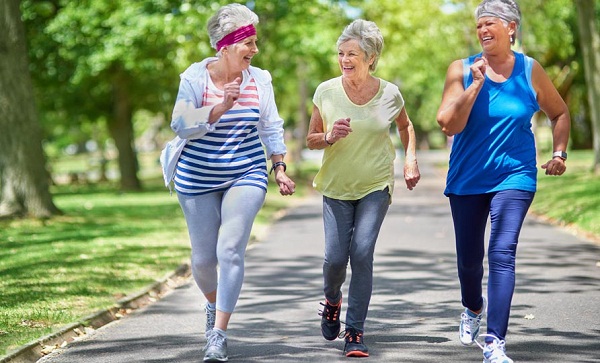Study says exercise can reverse the damaging effects of aging
Exercise has lots of benefits to the body and mind , which is not limited to maintaining us healthy, but also can reverse damage to a sedentary, aging hearts and help prevent risk of future heart failure — if it’s enough exercise, and if it’s begun in time, according to a new study by cardiologists at UT Southwestern and Texas Health Resources.

It is even beneficial for people, who are already on their prime. It is the time when the heart retains some plasticity and ability to remodel itself, according to the findings by researchers at the Institute for Exercise and Environmental Medicine (IEEM), which is a collaboration between UT Southwestern Medical Center and Texas Health Presbyterian Hospital Dallas.
If you want to see some good result then you should exercise at least four to five times a week and not two to three times a week, which is a common practice. Researchers claimed that it is not enough and would not be able to reverse the damaging effects of aging.
“Based on a series of studies performed by our team over the past 5 years, this ‘dose’ of exercise has become my prescription for life,” said senior author Dr. Benjamin Levine, Director of the Institute and Professor of Internal Medicine at UT Southwestern. “I think people should be able to do this as part of their personal hygiene — just like brushing your teeth and taking a shower.”
The regimen included exercising four to five times a week, generally in 30-minute sessions, plus warmup and cool-down:
- One of the weekly sessions included a high-intensity 30-minute workout, such as aerobic interval sessions in which heart rate tops 95 percent of peak rate for 4 minutes, with 3 minutes of recovery, repeated four times (a so-called “4 x 4”).
- Each interval session was followed by a recovery session performed at relatively low intensity.
- One day’s session lasted an hour and was of moderate intensity. (As a “prescription for life,” Levine said this longer session could be a fun activity such as tennis, aerobic dancing, walking, or biking.)
- One or two other sessions were performed each week at a moderate intensity, meaning the participant would break a sweat, be a little short of breath, but still be able to carry on a conversation — the “talk test.” In the study, exercise sessions were individually prescribed based on exercise tests and heart rate monitoring.
- One or two weekly strength training sessions using weights or exercise machines were included on a separate day, or after an endurance session.
The people who participated in the study begin with three, 30-minute, moderate exercise sessions for the first 3 months and peaked at 10 months when two high-intensity aerobic intervals were added. More than 50 participants showed up and took part of the study.
At the end of the two-year study, those who had exercised showed an 18 percent improvement in their maximum oxygen intake during exercise and a more than 25 percent improvement in compliance, or elasticity, of the left ventricular muscle of the heart, Dr. Levine noted. He compared the change in the heart to a stretchy, new rubber band versus one that has gotten stiff sitting in a drawer.
Sedentary lifestyle is bad for us and could lead to stiffening of the muscle in the heart’s left ventricle, the chamber that pumps oxygen-rich blood back out to the body, he explained.
“When the muscle stiffens, you get high pressure and the heart chamber doesn’t fill as well with blood. In its most severe form, blood can back up into the lungs. That’s when heart failure develops,” said Dr. Levine, who holds the S. Finley Ewing Chair for Wellness at Texas Health Dallas and the Harry S. Moss Heart Chair for Cardiovascular Research. He also holds the Distinguished Professorship in Exercise Sciences at UT Southwestern, which is celebrating its 75th anniversary this year.
Here are exercises that could improve your senior life:
- Aerobic activity could help you burn more calories.
- Squat is a great way to build some muscle in your lower body. The benefits that you would get are really good for aging people.
- Build your upper body strength. Using light resistance would be a great way to develop muscle mass in the upper body.
- Leg Raise is a great way to stabilize the body since it builds the thigh, hip, buttocks, and lower back muscles.
- Stretch your lower body. You can use a chair for this exercise. Grab a chair and bend behind the chair. Grab the foot with your left hand.
- Stretch the upper body.
Sources: Science Daily, Everyday Health

